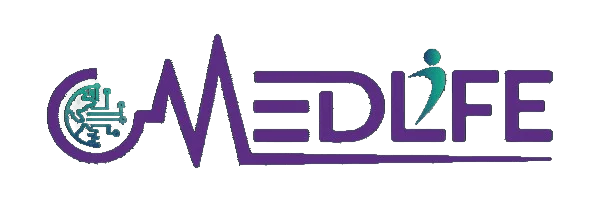In today’s healthcare environment, efficient and reliable medical billing software has become indispensable for healthcare providers. From streamlining billing operations to improving cash flow and ensuring regulatory compliance, a well-designed billing software is the backbone of revenue cycle management. This comprehensive guide outlines the features that define an ideal medical billing software and explores how these functionalities can transform the financial health of healthcare organizations.
The Importance of Medical Billing Software in Healthcare
Medical billing software is more than just a tool for invoicing it’s a complete solution for managing patient data, processing insurance claims, and maintaining compliance with evolving healthcare regulations. It ensures accuracy, boosts efficiency, and enhances the overall financial performance of a healthcare practice. Below, we explore the key components and benefits that make medical billing software indispensable.
Essential Features of an Ideal Medical Billing Software
1. User-Friendly Interface
A user-friendly interface ensures seamless navigation and operation, enabling staff to handle billing processes with minimal training. Key characteristics include:
- Intuitive design with straightforward menus
- Customizable dashboards to prioritize frequently used functions
- Compatibility with various devices, including desktops, tablets, and smartphones
2. Comprehensive Claims Management
Claims management is at the core of any billing software. The ideal system should:
- Automate claims generation and submission
- Track claims status in real-time
- Reduce errors with automated coding validation
- Facilitate electronic claims processing to minimize delays
3. Robust Compliance Features
Compliance is crucial for avoiding legal issues and ensuring patient data security. Effective medical billing software includes:
- HIPAA compliance with robust encryption and access controls
- Regular updates to meet evolving ICD-10 and CPT coding standards
- Built-in audit trails to ensure transparency in all financial transactions
4. Patient Preregistration and Scheduling
Streamlined patient registration reduces billing errors and improves operational efficiency. Features should include:
- Pre-registration workflows that collect patient demographics and insurance details
- Automated verification of insurance eligibility
- Integration with appointment scheduling for a seamless patient experience
5. Automated Reporting and Analytics
Insights into financial and operational performance are critical for optimizing revenue cycles. Reporting features should include:
- Customizable financial reports and dashboards
- Metrics for tracking accounts receivable, denial rates, and revenue performance
- Business intelligence tools to identify trends and improve decision-making
6. Flexible Payment Processing
To accommodate diverse patient needs, billing software should offer:
- Multiple payment options, including credit cards, online payments, and payment plans
- Automated payment reminders to minimize overdue accounts
- Secure payment gateways for protecting sensitive financial data
7. Denial Management and Claims Rejection Analysis
Efficient denial management is critical for reducing revenue leakage. Key features include:
- Automatic identification and categorization of claim denials
- Detailed reports highlighting reasons for denials
- Tools for correcting errors and resubmitting claims efficiently
8. Seamless Integration with EHR/EMR Systems
Integration with existing electronic health record (EHR) and electronic medical record (EMR) systems ensures a unified workflow. Benefits include:
- Automatic syncing of patient data for accurate billing
- Reduced duplication of work between clinical and administrative teams
- Enhanced interoperability for better communication across departments
9. Cloud-Based Accessibility
Cloud-based medical billing software offers unparalleled convenience and flexibility. Features include:
- Remote access for staff working from different locations
- Scalability to accommodate growing patient volumes
- Automated backups to prevent data loss
10. Customization Options
Customizable features allow practices to tailor the software to their specific needs. Examples include:
- Modifiable templates for invoices and reports
- Configurable workflows to align with organizational processes
- Role-based access to enhance security and streamline user experience
11. Mobile Accessibility
Mobile-friendly software enables billing staff to work on the go. Benefits include:
- Real-time access to billing and claims data
- Notifications for pending tasks or claim updates
- Increased productivity through mobile-enabled workflows
12. Advanced Security Measures
Ensuring the security of sensitive patient data is a non-negotiable feature. An ideal software should provide:
- Multi-factor authentication for user accounts
- End-to-end encryption for data in transit and at rest
- Regular security updates and patches
13. Cost-Effectiveness
Cost-effective software offers robust functionality without straining budgets. Key considerations include:
- Transparent pricing models with no hidden fees
- Flexible subscription plans for practices of all sizes
- High return on investment through reduced errors and increased efficiency
14. Scalable Architecture
As practices grow, their billing needs evolve. Scalable software can accommodate this growth by:
- Supporting increased patient volumes without performance issues
- Adding advanced features as needed
- Offering multi-location support for expanding practices
15. Automated Updates
Medical billing codes and regulations change frequently. Automated updates ensure compliance and accuracy by:
- Keeping coding libraries up to date
- Reducing the burden on administrative staff
- Preventing claim rejections due to outdated codes
16. Patient Engagement Features
Modern billing software should improve patient engagement with features like:
- Online portals for viewing statements and making payments
- Appointment reminders via email or SMS
- Transparent billing processes for enhanced patient satisfaction
How to Choose the Right Medical Billing Software
When evaluating medical billing software for your practice, consider the following:
- Assess Your Practice’s Needs: Understand your patient volume, billing workflow, and specific requirements.
- Compare Features: Look for software that offers robust claims management, compliance tools, and integration capabilities.
- Check Vendor Reputation: Read reviews and request demonstrations to ensure reliability and ease of use.
- Evaluate Scalability: Choose software that can grow with your practice’s needs.
- Ensure Data Security: Prioritize software with robust security measures to protect sensitive information.
Conclusion
An ideal medical billing software is a cornerstone for efficient revenue cycle management. By incorporating features like automated claims processing, compliance tools, advanced analytics, and patient engagement functionalities, healthcare providers can significantly enhance their financial health and operational efficiency. With the right software, practices can reduce errors, optimize workflows, and focus more on delivering quality care. When choosing a solution, prioritize software that aligns with your specific needs while offering scalability and robust security features to adapt to the ever-evolving healthcare landscape.
Contact MedLife MBS, we understand the complexities of medical billing services and offer tailored solutions to meet the unique needs of your practice. Our team specializes in revenue cycle management, denial management, and HIPAA-compliant billing services to help your practice achieve optimal financial performance.


